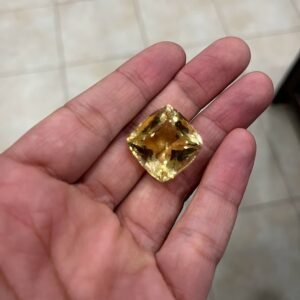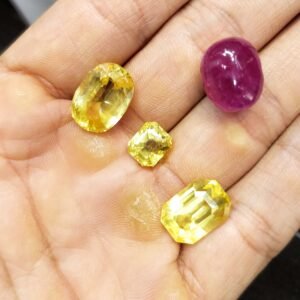Natural Amethyst – Big sizes Origin-Brazil

Description
Amethyst is a beautiful and popular gemstone that is part of the quartz family, which also includes other well-known gemstones like citrine, rose quartz, and smoky quartz. It is highly prized for its striking purple or violet color, which ranges from pale lavender to deep, rich hues. The name “amethyst” is derived from the Greek word “amethystos,” which means “not drunken.” In ancient times, amethyst was believed to have the power to prevent intoxication and protect against drunkenness.
Here are some key features and details about Amethyst, with a focus on its connection to Brazil:
- Color: The most desirable amethysts exhibit a deep, rich purple color with a reddish or blueish tint. This royal purple color is associated with amethysts of the highest quality.
- Geographical Origin: Amethyst is found in various locations around the world, but Brazil is one of the most well-known and prolific sources of this gemstone. Brazilian amethysts are highly regarded for their quality and can be found in several regions within the country, including Minas Gerais, Bahia, and Rio Grande do Sul.
- Varieties: Amethyst can display color zoning, where the purple color may vary in intensity within a single crystal. There are also other varieties of quartz that are closely related to amethyst, such as citrine (yellow to golden quartz), smoky quartz (gray to brown quartz), and prasiolite (green quartz). When amethyst and citrine are found in the same crystal, it is called ametrine.
- Hardness: Amethyst has a hardness of 7 on the Mohs scale, making it a durable gemstone suitable for use in various types of jewelry.
- Metaphysical Properties: Throughout history, amethyst has been associated with various spiritual and metaphysical beliefs. It is often considered a stone of protection, tranquility, and balance. Many people use amethyst for meditation and healing purposes.
- Birthstone and Anniversary Stone: Amethyst is the birthstone for the month of February and is also associated with the 6th and 17th wedding anniversaries.
- Cut and Shape: Amethyst is typically cut into various shapes for use in jewelry, including faceted cuts for rings and pendants, as well as cabochons for earrings and brooches. Its high transparency and vibrant color make it a popular choice for jewelry designers.
- Value Factors: The value of amethyst is influenced by its color, clarity, cut, and carat weight. Deep, evenly colored stones with no visible inclusions are the most valuable.
- Treatment: Amethysts are commonly heat-treated to enhance their color and remove undesirable tints. This treatment is widely accepted in the gemstone industry and does not typically affect the stone’s value.
- Historical Significance: Amethyst has been used in jewelry and religious artifacts for centuries. It has been associated with both the Greek god Bacchus (Dionysus) and the Christian church, making it a versatile gemstone with diverse historical connections.
In summary, amethyst is a beloved gemstone known for its rich purple color and its association with various symbolic and metaphysical properties. Brazilian amethyst is highly regarded for its quality and plays a significant role in the global amethyst market. It is a stunning gemstone that is commonly used in jewelry and admired for its beauty and historical significance.
Only logged in customers who have purchased this product may leave a review.







Reviews
There are no reviews yet.